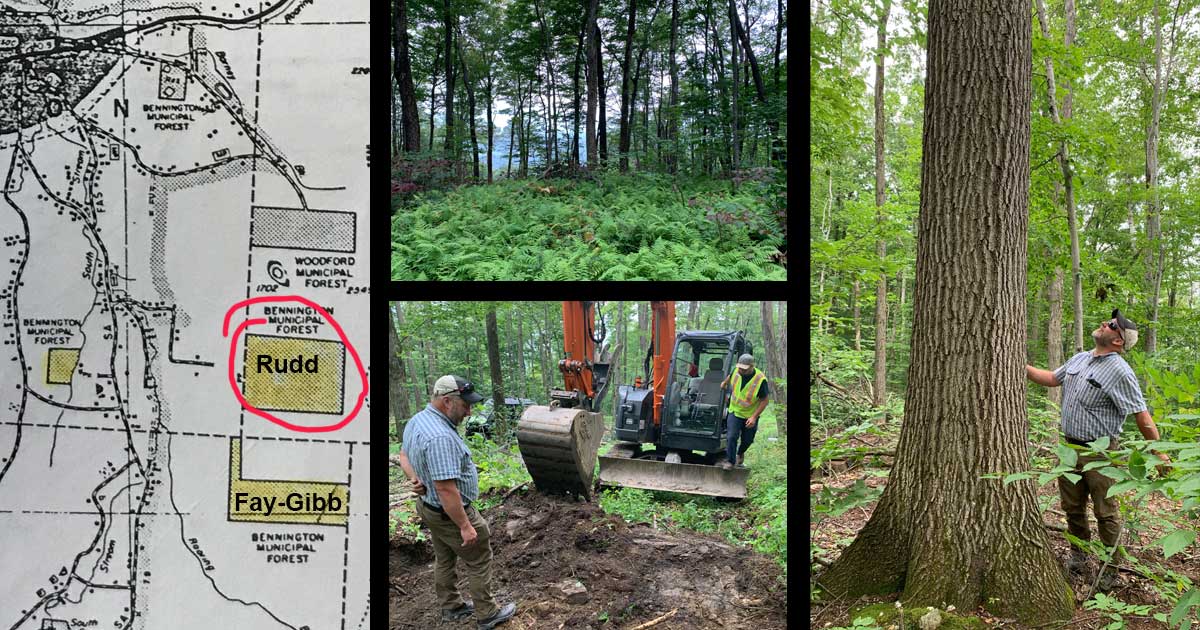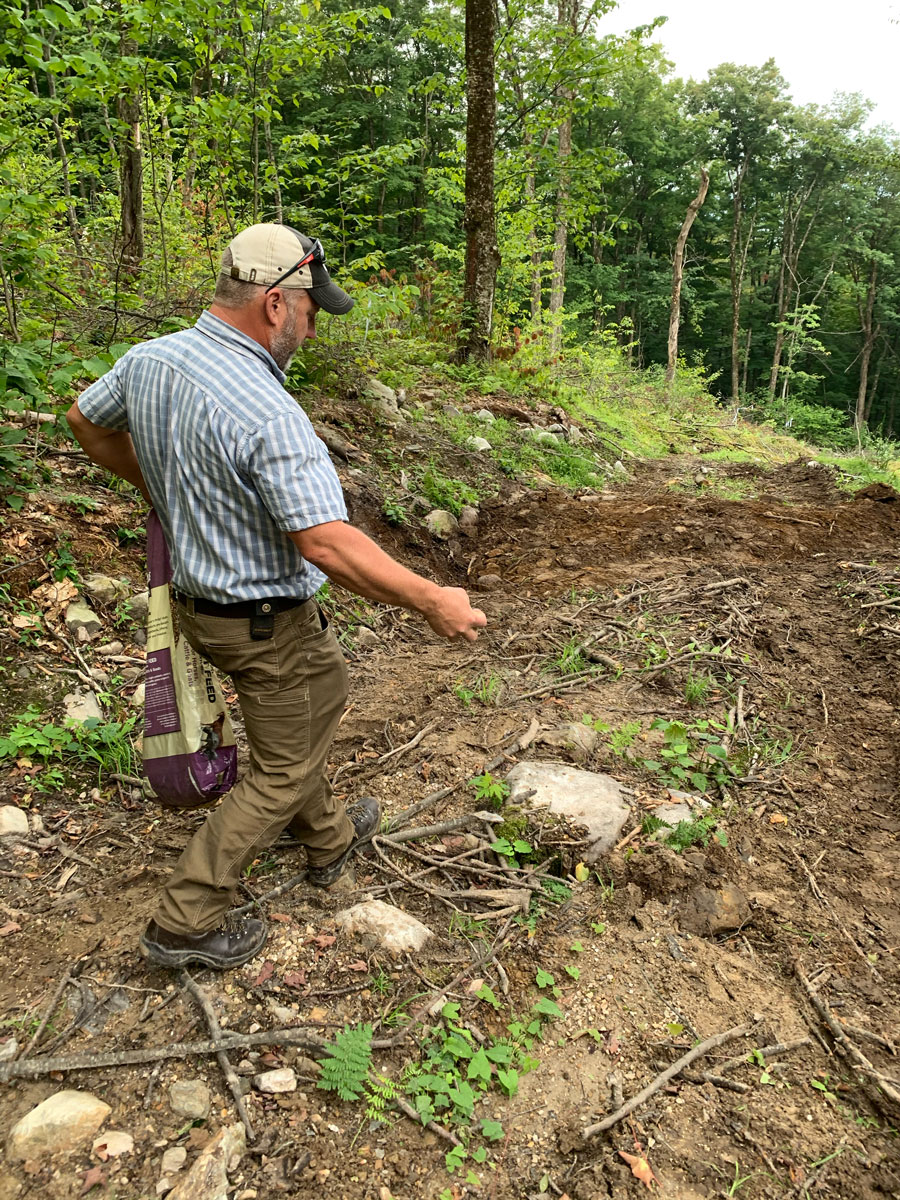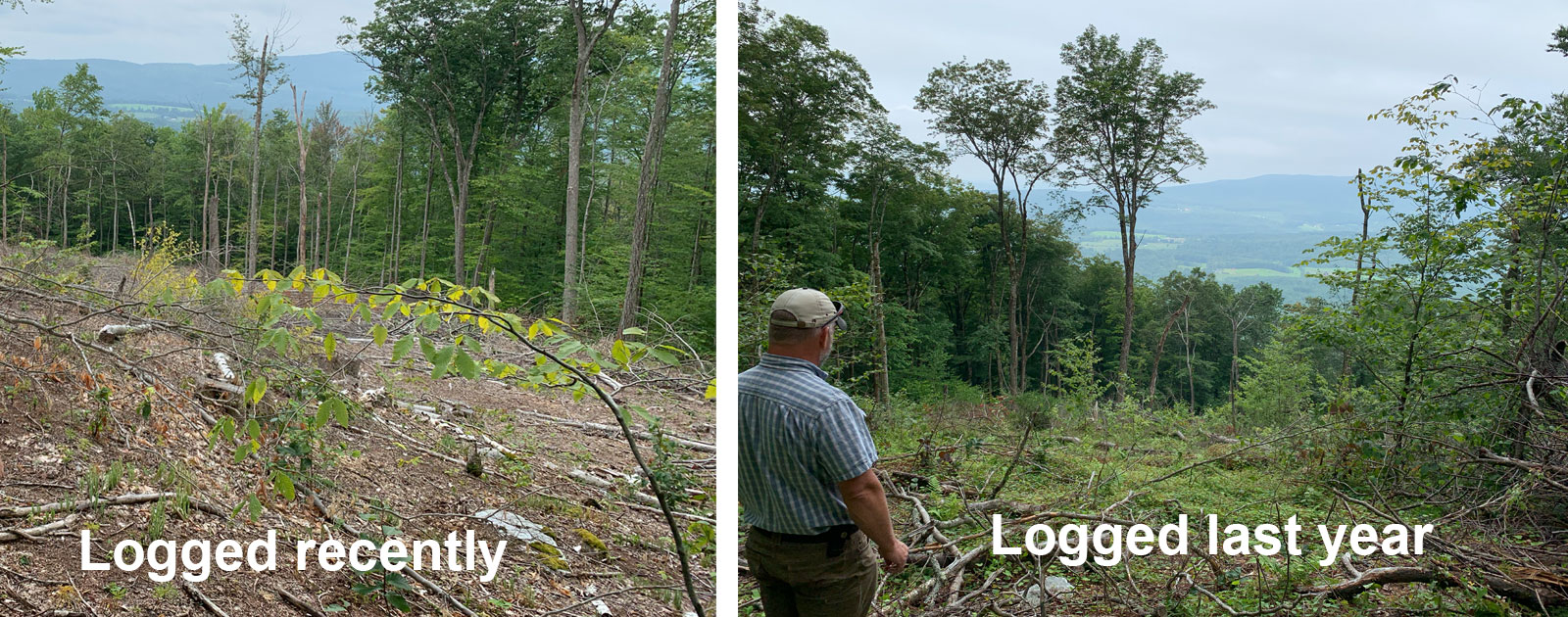
Improved municipal forests are a boon for wildlife AND generate revenue for the Town!
In accordance with a management plan created in 2017 and with guidance from the Bennington County Forester, Cory Creagan, the Town has been implementing forest management activities, including a series of planned timber harvests on the 245 acre Rudd lot which is located just over the town line in Woodford.
Purchased in 1942, the lot was originally part of the town water supply watershed and aqueduct route. Once the town water supply switched to Bolles Brook, the water works there were abandoned. Remnants of the original aqueduct still remain in the woods!
In 2018, in an effort to protect the land from development and / or conversion and ensure responsible management, the Town enrolled the Rudd lot land in the Use Value Appraisal / Current Use Program and developed a forest management plan. Due to a desire to practice a higher level of environmental stewardship, this property was also enrolled in the American Tree Farm System and is now a certified “Tree Farm.”
The land is primarily steep and unsuited for agriculture, but the management plan identifies three primary goals for the land; sustainable timber harvesting, wildlife habitat development, and aesthetic and recreational use. At the core of, and in support of these three goals is the overarching goal of maintaining a healthy, diverse, and resilient forest.
After extensive review and data collection, the Rudd lot forest management plan was written by then county forester, Kyle Mason. The plan recognized the presence of diseased American beech trees as a significant concern, primarily due to the tendency / ability of this species to inhibit the establishment of other species, primarily red oak and red maple, resulting in reduced species diversity and reduced overall resiliency.
In an effort to reduce the presence of diseased American beech and create conditions favorable for the regeneration of species such as red oak, red maple, and black birch, a series of “patch cuts” was prescribed. Additionally, the best formed and most vigorous red oak trees throughout the property were identified and “released” through a “crop-tree release” treatment. In most cases, this involved harvesting a lower-quality American beech or red maple in order to give more growing space to the red oak. The intention is to improve growth and mast (acorns) production for the red oak.
 There are a total of ten patch cuts, affecting about 20-25% of the total acreage with the goal of planning for future harvesting in about eight years. Many beautiful mature trees remain as well and the majority of the land is left untouched. The distribution of untreated areas, patch cuts, and areas treated with crop-tree release has created a mosaic of conditions and a variety of habitats that are suitable to a wide array of wildlife species.
There are a total of ten patch cuts, affecting about 20-25% of the total acreage with the goal of planning for future harvesting in about eight years. Many beautiful mature trees remain as well and the majority of the land is left untouched. The distribution of untreated areas, patch cuts, and areas treated with crop-tree release has created a mosaic of conditions and a variety of habitats that are suitable to a wide array of wildlife species.R.J. Joly, director of the Department of Public Works, estimates that the town has earned over $70,000 from sales of timber from the patch cuts. Funds generated from timber sales go into the Capitol Reserve for future use.
It’s amazing to see the changes in the new patch cuts and how quickly it regenerates into brushy growth that is ideal habitat for many species. Included in this series of photos is a picture of two patches just one year apart in when they were cut to show the growth. Several of the patch cuts are now filled with a dense population of pin cherry (fire cherry) saplings. The growth of these saplings this year has been phenomenal.
The result of the habitat improvement created by these new forest openings is already evident with lots of deer sign. In addition to deer, the lands are home to black bear, porcupines, bobcats, chipmunks, squirrels, toads, barred owls, oven birds, black throated green warblers, black throated blue warblers, red eyed vireos, pileated wood peckers, and yellow bellied sap suckers.
With the logging completed, town crews are finishing the project with the installation of water bars on the logging paths to prevent erosion and preserve those access roads for future harvests. Nearly all of the trails / paths used during the recent timber harvesting are historic logging trails. Until now these trails have had insufficient or no erosion control measures and have seen significant damage from erosion. Eroding trails are also a water-quality issue because so often the sediment and eroded materials end up being discharged into a nearby stream.
The Town is taking this opportunity to protect water-quality and prevent erosion by stabilizing the trail and road system. The photos show DPW Director R.J. Joly with equipment operator Brad Sawyer discussing water bar construction, and other shots of Joly seeding the new water bars. The Town strives to be good stewards of this land, both preserving its timber value and wildlife habitat for future generations. Currently access to this parcel is limited to timber harvesting, but the hope is to someday attain better access to allow for more recreational use by the public.

